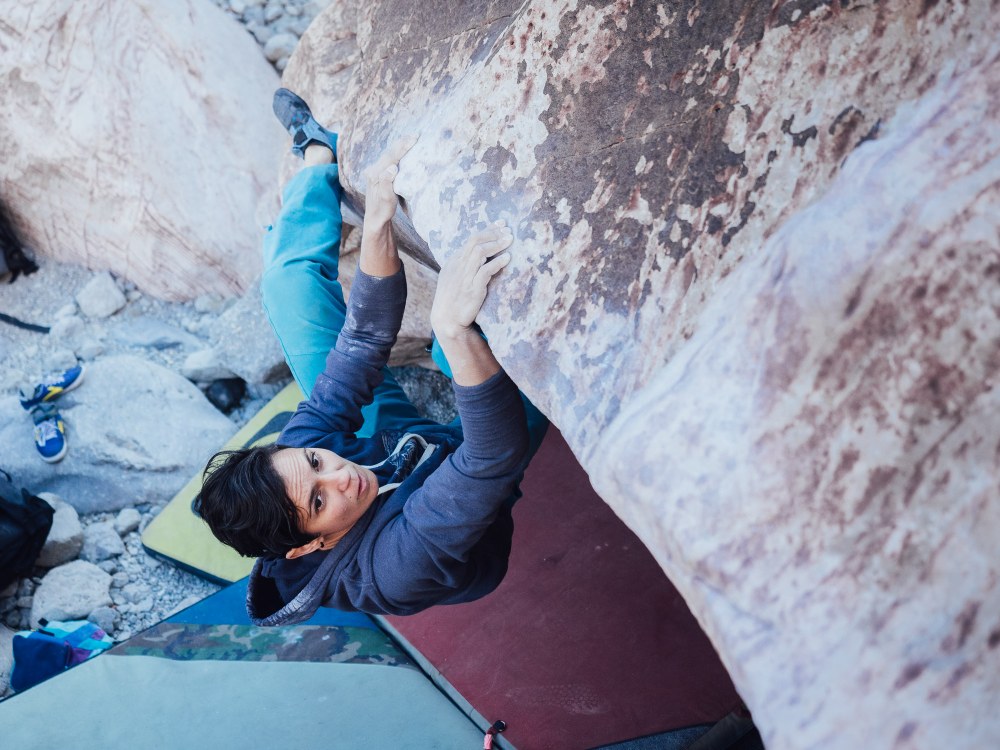
By the time Mercedes Pollmeier arrived at the University of Northern Iowa (UNI), she’d lived in Australia, China, Mauritius, and had spent considerable time in Germany with her grandma. The daughter of a German father and an Indian South African mum, Mercedes had seen a lot of the world already when a full-ride tennis scholarship brought her to the U.S. at 17. A multilingual world citizen, the starry-eyed teen had her eyes keenly set on one thing: the Olympics. Little did she know that she’d soon meet a strength coach who would forever change the course of her life.
Growing up, Mercedes’s older brother was a great tennis player. She was inspired to play after watching him, and it turns out she also had a natural talent and insatiable determination. After two years at UNI, her talents caught the eyes of the Metropolitan State University of Denver and she moved west. There she met Dave Wahl, a strength coach based out of a climbing gym. While training for the Olympic Trials in tennis, Dave’s approach to movement changed her entire outlook. It ultimately inspired Mercedes to get a second degree in exercise science, then pursue a Master’s in Human Movement. Through that program she met her wife, Brenda, and together they moved even further west where Mercedes ultimately became a strength coach herself.
Today, Mercedes is a published author and successful online training coach specializing in training climbers to be strong, flexible, and versatile. She’s also an 8-year member of The Mountaineers. She signed up after a friend recommended our nutrition course, and continued as a volunteer for our youth programs.
Through her online coaching business, Modus Athletica, Mercedes helps people develop strength and flexibility for their outdoor pursuits. “I wanted to help people realize their potential,” she says. “My primary objective as a coach is to make sure you get strong, and stay strong, for life.”
Mercedes’s commitment to pushing herself extends to all parts of her life. “It’s always been my pursuit to push my performance as far as I can in the things I love, like bouldering. But this tends to spill over into other areas of my life as well: my overall health, entrepreneurship, and being a better human.”
Mercedes met Maria Hines, a James Beard Award-winning chef and co-owner of Tilth, through Modus Athlethica. Less well known is Maria’s impressive climbing resume, which includes notable ascents like the Nose in Yosemite. When Maria hired Mercedes to help train for a few of these big objectives, the two became fast friends, and earlier this year released Peak Nutrition: Smart Fuel for Outdoor Adventure, published fittingly by Mountaineers Books. The project came about on a road trip to Smith Rock after Maria peppered Mercedes with questions about nutrition specific to climbers. Maria decided a book needed to be written on the topic and they were just the two to do it, giving Mercedes yet another meaty project to showcase her determination and grit. The book launched in March to rave reviews.
Mercedes’s passions for recreation inevitably means she spends a lot of time outdoors. She’s grateful for this teaching ground. “The outdoors have taught me to be patient and adaptable. You can’t always have the perfect conditions; sometimes you need to stick it out in whatever environment is present. Nature never stays the same – it’s always changing. Because the landscape is shifting, you need to be adaptable too. This is the greatest lesson I learned from the outdoors: change is inevitable, and how you adapt will depend on how you see the change.”
To help all of us be more flexible regardless of our surroundings, Mercedes busted a few myths and put together her favorite exercises that you can do almost anywhere:
Flexibility Myths
“Flexibility isn’t important”
You can only develop strength in the ranges you have. We know that the more range you have, the more strength you can develop. Strength is built on a base of flexibility. It also allows you to be anti-fragile, this means resiliency on steroids. If you get injured, you will bounce back quicker. If you get yourself into a bad situation, such as an awkward fall, your body has more range to adapt to the fall. More flexibility means more options as a mountain athlete.
“You shouldn’t static stretch during your warm-up”
This is not really true at all. This information was based on some poor isolated research. You can be totally safe doing 15-30 second static holds in your warm-up, and it may benefit your performance. The best way to warm up is to increase blood flow first, then go from general to more specific movements. If your climb/outdoor pursuit requires you to have super flexy hips, then you should absolutely do static and dynamic stretching in your warm-up. Also, we mostly perform at sub-max intensities, which is not affected by the decrease in mechanoreceptor activity (often a side effect of long-held relaxed static stretches).
You can use flexibility training before, during, and after workouts. For faster flexibility gains, do sessions dedicated to flexibility. For those interested, I have a flexibility course called Stretch Mechanic which I run several times a year.
”Stretching makes you weak”
Stretching actually increases hypertrophy (growth) of the muscle. By increasing time under tension (holding an end-range position for a length of time), this starts the process of muscle growth. Stretching is essentially a continuous eccentric contraction. And eccentrics are typically what we use to help people overcome a strength plateau. In essence, flexibility training is strength training, but we focus on end ranges and how we use these end ranges.
“Strength training increases range of motion”
If the load is too heavy, the nervous system will inhibit the end range as a protective mechanism. Stretching will increase stretch tolerance, so when it’s time to progressively load the stretch, it can increase strength in those ranges. However, don’t add too much weight in the beginning if flexibility is your goal. You can use other protocols to increase strength instead.
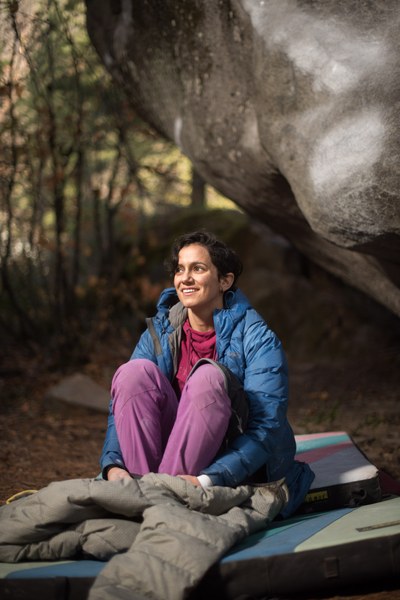
Mercedes sitting under the route Premium Coffee in Leavenworth. Photo by Greg Orlov.
“Passive stretching and flexibility aren’t useful”
Many folks think passive end ranges when they think about flexibility. That a limb can only be passively moved into a certain position, and that this would be inherently useless. But passive flexibility doesn’t really exist. There are only varying degrees of contraction. Going back to the above information, when we are in a stretch, the muscle slowly lengthens (eccentric). The more flexible you are, the less contraction you need to get into certain positions, making you more efficient and more able to use the strength that you have. The fitness industry unfortunately is decades behind the current research when it comes to flexibility.
exercises for flexiblity
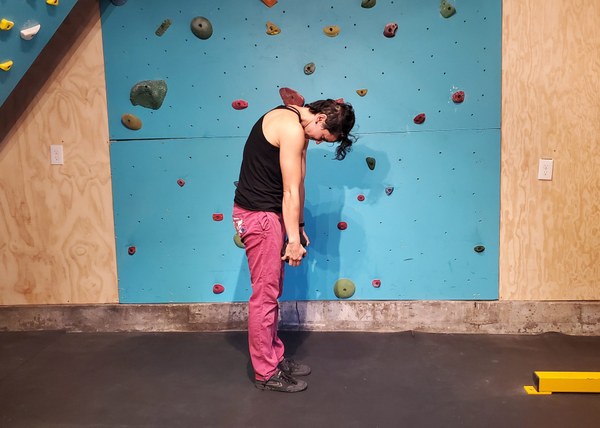
J Curl
This exercise is marvelous for longevity of the spine and aging in general. The more your spine can move, the better you can move in your sport and life. This exercise can be used as a warm-up, a strength exercise, a flexibility exercise, or as a cool down.
3-5 sets of 5 second holds.
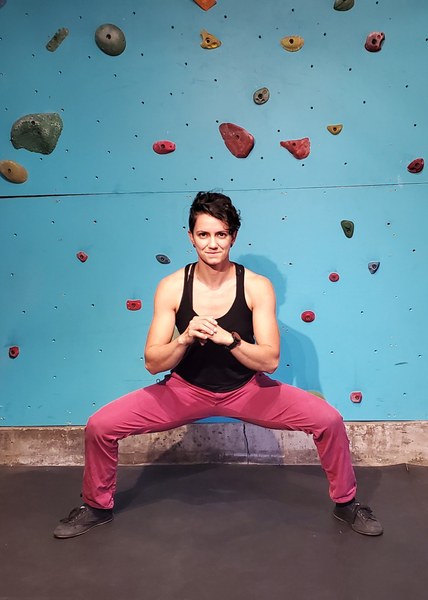
Horse Stance
This one is for all the climbers out there. You often need to make big leg moves on big ascents. If you can stem well, we can relax more and recover on the route. If you can move your legs wider to reach foot holds, you become more efficient in our movement.
3-5 sets of 20 second holds, working up to 60 seconds.
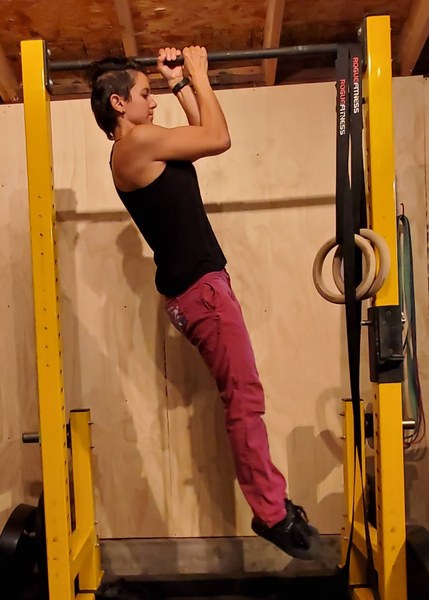
Lock-off
If you want to get better at pull ups, make sure to do this. It uses the isometric method to gain strength at specific angles. The goal here is to make this as hard as you can.
3-5 sets of 10 second holds, intensity should be very close to failure on each set.
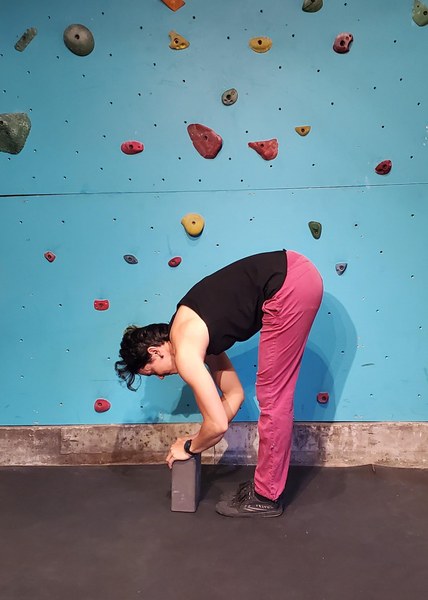
Pike Stretch
This is actually an active stretch. If you want to touch your toes, pair this one with the J curl and see the results!
1-3 sets of 60 second holds.
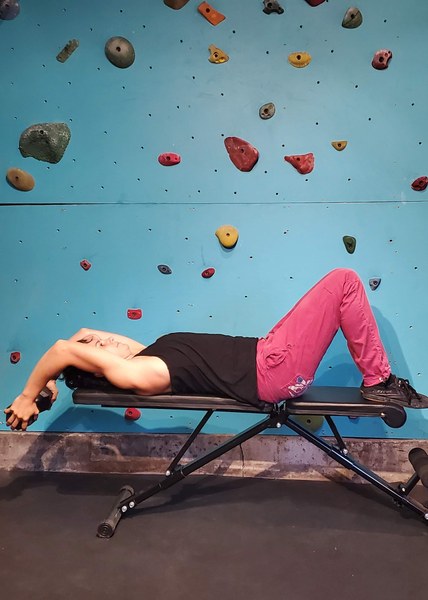
Bench Pullovers
This one is great for lat strength and flexibility. It will help you pull down harder without having to do more pull ups.
3-5 sets of 8-10 reps.
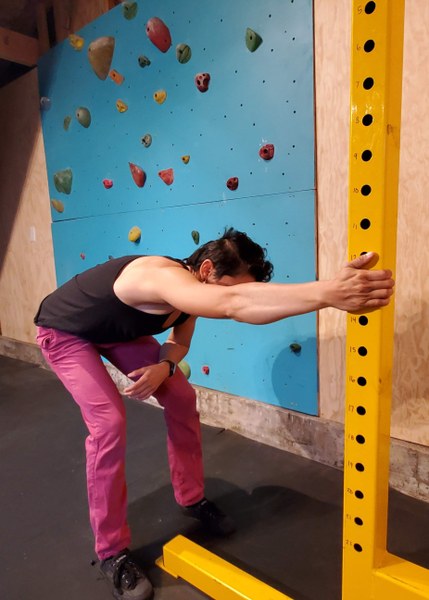
Lat Stretch
Pair this one with the pullover for increased overhead ability. If you have trouble reaching up over head, this stretch will help you!
1-3 sets of 30-60 second holds.
Mercedes Pollmeier has coached thousands of clients of all abilities, from recreational to pro-level competition climbers. To learn more, visit her website modusathletica.com, or pick up a copy of Peak Nutrition at mountaineersbooks.org. To see videos of the exercises in this article, and more, visit youtube.com/mercedespollmeier.
This article originally appeared in our Winter 2021 issue of Mountaineer Magazine. To view the original article in magazine form and read more stories from our publication, visit our magazine archive.
 Kristina Ciari Tursi
Kristina Ciari Tursi